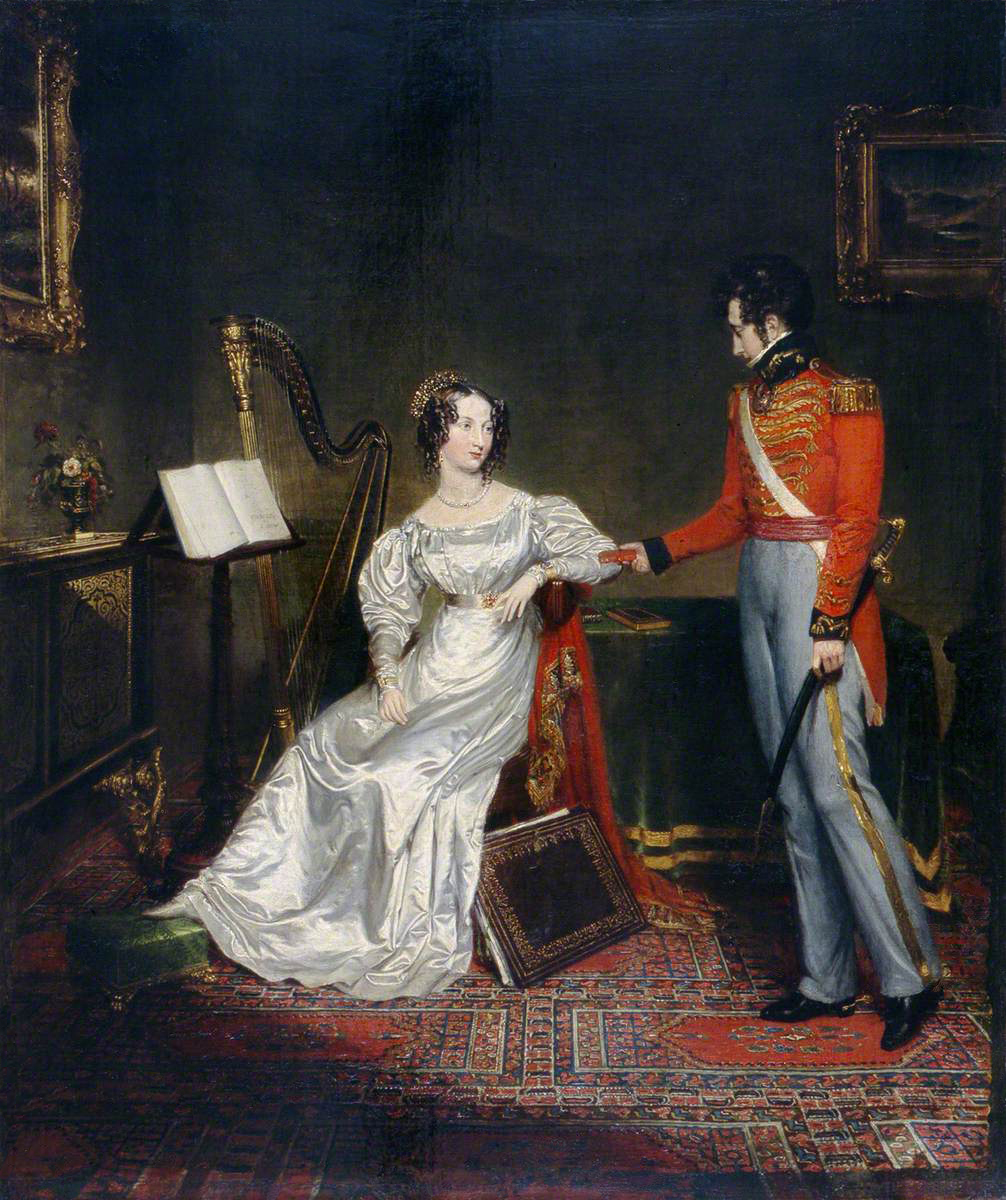A Royal Wedding
The day of the royal wedding arrived. And much like when Diana and Charles, Wills and Kate even Meghan and Harry, the crowds gathered outside Clarence House along the Mall between Carlton House and Buckingham House long before the wedding time at nine pm.
In the early afternoon, Leopold visited his bride before returning to Clarence House. The crowds outside yelled for him throughout the day, that he was compelled to come out onto the balcony every quarter of an hour to wave. As his last day as a single bachelor, Leopold dined with a few gentlemen while Charlotte dined with her grandmother, Queen Charlotte then changed into her wedding dress.
The young Charlotte’s wedding gown befitted a princess, costing ten thousand pounds. The gown was a white and silver slip covered with a transparent silk net embroidered with shells and flowers in silver lamé. Brussels lace trimmed the sleeves and the six-foot long train constructed of the same material as the slip. The train fastened like a cloak with a diamond clasp. Charlotte wore a wreath of diamond leaves and roses along with a diamond necklace and earrings that her father gave her and a diamond bracelet gifted to her from Leopold.
The bride departed Buckingham House (it wasn’t a palace yet) and drove down the Mall to meet her groom.
For the first time, Leopold donned the scarlet British uniform and carried a jewel-encrusted sword given to him by the queen. The ceremony was short and dignified except for Charlotte’s giggle when her poor groom promised to endow her with all his worldly goods.
Outside, the church bells pealed. Bonfires were lit. Fields guns cracked their salute in St. James’s Park and down the Thames, the Tower of London’s cannons added their boom.
Now changed into a traveling dress with white satin bonnet trimmed with lace and accented with a plume of ostrich feathers over one shoulder in the latest fashion and a pelisse with a ermine collar and cuffs.
The royal couple climbed in a green carriage for their journey off alone to Oatlands, which the Duke and Duchess of York had lent the couple for their honeymoon.
A Royal Marriage
After the honeymoon, Charlotte and Leopold returned to London and set up residence at Claremont. These first weeks of their marriage the young couple learned about each other and discovered they had a lot in common.
Naturally, the royal couple attracted everyone’s notice but people whispered about how the “uninhibited princess sat with her hand resting on her husband’s arm.” Meanwhile, Leopold wrote, “except when I went out to shoot, we were together always, and we could be together, we did not tire.” The lovebirds read to each, played duets on the piano, strolled in the park and drove together. However, Charlotte no longer rode due to a miscarriage she suffered early in their marriage. The doctors didn’t think it wise and Leopold did not approve of it. Their married life seems to have been bliss.
Charlotte loved to spoil and care for her husband, regularly combing his hair and even folding his cravats. Leopold grew a mustache, which was rare in England to please his wife since she had loved the one her deceased uncle—the Duke of Brunswick—had. Their home life was describe as a place where harmony reign, along with peace and love.
“My master is the best of all husbands in all the five quarters of the globe; and his wife bears him an amount of love, the greatness of which can only be compared with the English national debt.”
Leopold schooled Charlotte to behave more like a proper princess. He did so “light-heartedly and lovingly.” He would whisper, “doucement, Cherie, doucement,” whenever the princess became loud and animated. So, she nicknamed Leopold “doucement.”
Naturally, it was believed Leopold was strict. But years later when he wrote to Queen Victoria, “I know that you have been told that she ordered everything in the house and liked to show that she was mistress. It was not so. On the contrary, her pride was to make me appear to my best advantage and even to display respect and obedience when I least wanted it from her.”
The Christmas season arrived with the couple at Oatlands with the Duchess of York. Presents were given and the German custom of a little pine tree decorated with baubles and candles was on display.
On Charlotte’s twenty-first birthday on January 7, Charlotte was ill yet they would have happy news to share. April 30th arrived with Leopold calling on the Prince Regent at Carlton House to share the joyful news. Charlotte was over three months pregnant.












 July 18, 2017 is the bicentennial anniversary of Jane Austen’s death. I have read her books, seen the movies and read her letters. She has inspired me to write Regency and learn about the royal navy and even imagine strolling the streets of Bath. I have numerous copies of her novels.
July 18, 2017 is the bicentennial anniversary of Jane Austen’s death. I have read her books, seen the movies and read her letters. She has inspired me to write Regency and learn about the royal navy and even imagine strolling the streets of Bath. I have numerous copies of her novels.